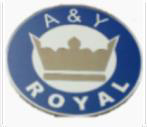Everyone wants to save money on car insurance, and there are ways to make it happen. An annual review of your car insurance policy is always a good idea, and discounts can often be possible with smart driving practices and an accurate reflection of your car’s value. The following tips may help ensure your auto insurance premium dollars are well spent, so consider checking with your insurance agent or carrier to see what is offered.
Clean Driving Record:If you have a clean driving record with no accidents and no violations in the last three years, you should qualify for a “safe driver” discount. If you don’t see a discount on the declarations page of your renewal, check with your agent or insurance provider.
In-Car Technology:Good driving habits can also turn into money savings with user-based insurance. Many carriers offer technology tools that hook into the diagnostic port of your car or access information from systems like OnStar. The tool pulls data from the car’s computer and sends it to the insurance company. The tool tracks the time of day the car is driven, miles, acceleration, speed and braking. After a short trial period, customers may qualify for an initial discount with good driving habits. After a longer period of tracking, the policyholder can qualify for even higher discounts, which can top 10-15%.
Military:Many insurance carriers offer discounts for members of the armed forces.
Bundling:If your auto and homeowner policies are with the same insurance company you probably qualify for a discount.
Good Student:If you have young drivers on your policy who are good students, usually a B average or higher, you may qualify for a discount. There are also discounts available for participating in safe driving programs.
Safety Equipment:If your current vehicles have special accident avoidance systems like rear-view cameras, airbags, collision-warning systems, anti-locking brakes and an anti-theft protection device, you may qualify for discounts.
Green Vehicles:If you own a car that is a hybrid or takes alternative fuel, it may garner savings with your insurance provider.
High Deductible:Changing the amount of your collision and or comprehensive deductibles can also be an option to control your premium costs. Selecting a higher deductible for either coverage will lower your premium. But it’s important to understand this move will increase your financial exposure should an accident occur.
Billing:Many companies offer discounts on items like paperless billing, making a payment-in-full for your annual premium and customer loyalty.
A final tip to every driver would be to make sure you have a “what if I have an accident kit” in your glove box. This kit should contain a pencil, a pad of paper to write down accident details and witness contact info, your agent’s contact info, your current insurance card and emergency contact info with names and numbers of people to call in case of an injury. Always take photos of an accident scene, vehicle license plates and drivers’ info with your phone for your records.
Source: CARSTAR





